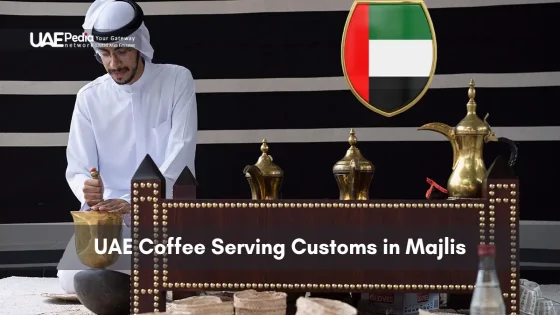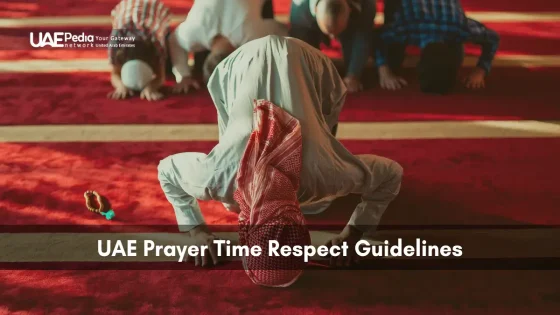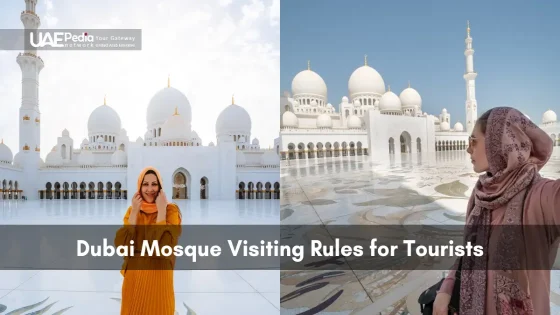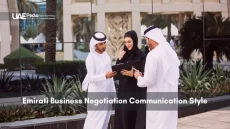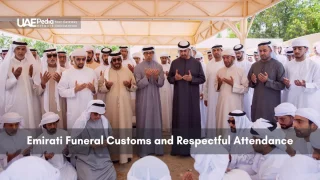“A guest’s shadow is a blessing,” whispers a Bedouin proverb—and nowhere does this ethos shine brighter than in the ritual of sharing aromatic brew in a traditional gathering space. This isn’t just about sipping a drink; it’s about stepping into a world where every gesture, from bean selection to cup placement, weaves an unspoken bond between host and guest.
At its heart, this practice transforms a daily act into art. The host’s meticulous preparation—roasting beans with cardamom, pouring from a dallah pot with precise height—isn’t showmanship. It’s a quiet language of respect, tracing back to ancient trade routes where offering refreshment sealed alliances. Today, these moments still pulse with heritage, whether in bustling cities or desert retreats.
What surprises many newcomers? The ceremony’s rhythm. Cups are filled just a third to keep the brew warm, refilled until a subtle wrist shake says “enough.” It’s a dance of patience and presence, where rushing feels as foreign as sand in a karak chai. Through this lens, even a fleeting visit becomes a bridge to understanding values like generosity and community.
This ritual codifies the preparation and service of Arabic coffee in a Majlis setting. Beans are lightly roasted with cardamom, ground to a coarse consistency, and brewed in a brass dallah. Servings are dispensed into small porcelain finjān at one-third capacity to maintain temperature, with refills continuing until the guest’s subtle wrist shake indicates completion. Precise pour height and right-hand presentation adhere to established etiquette protocols.
The procedure functions as a nonverbal hospitality framework and a means of cultural transmission. Each gesture—from bean selection to cup placement—signals respect and fosters communal bonds. Modern implementations in offices and cafés preserve core parameters while integrating electric grinders and temperature-controlled equipment. This continuity ensures the practice supports social cohesion and operational efficiency across traditional and contemporary environments.
Here’s what you’ll uncover:
- How this ritual mirrors the region’s soul—where every sip tells a story of nomadic roots and modern connections.
- The symbolic meanings behind brewing techniques and serving etiquette (hint: that tiny cup holds more than flavor).
- Ways to appreciate these traditions authentically, whether you’re sharing stories under woven palm fronds or in a high-rise lounge.
Early coffee ceremonies used a simple mortar-and-pestle method for grinding beans, underscoring the ritual’s roots in Bedouin innovation. Ref.: “UNESCO (2013). Arabic Coffee: A Symbol of Generosity. UNESCO Archives.” [!]
Overview of UAE Coffee Culture and the Majlis
Picture this: a UNESCO-protected ritual where steam rises like desert mist from golden pots, carrying whispers of ancestral connection. This isn’t just about brewing beans—it’s a living tapestry of generosity woven into daily life. Recognized globally for its cultural depth, the practice transforms simple ingredients into bridges between past and present.
The Living Room of Connection
Imagine spaces designed not for screens, but for faces. Here, low cushions and woven rugs create circles where stories flow as freely as the drink in hand. Locals often say, “The first cup is for the guest, the second for joy, the third for peace.” Every refill becomes a silent promise: You belong here.
- Communal values nurtured through shared sips and open dialogue
- Ceremonial preparation methods passed down like family heirlooms
- Symbolic pairings (think sweet dates balancing bitter brew) mirroring life’s harmonies
Traditional markets still buzz with vendors roasting beans over open flames—their crackling rhythms sync with bargaining banter. One elder trader grinned while telling me, “We don’t sell spices; we sell memories.” His hands, stained with cardamom, measured portions like a poet crafting verses.
Today’s gatherings honor this legacy through intentional gestures. A host’s posture leans forward, signaling readiness to listen. Cups clink softly, never rushed. It’s proof that heritage thrives not in museums, but in moments where strangers become friends through steam and stories.
Arabic coffee (‘Gahwa’) was inscribed in 2015 on UNESCO’s Representative List, underscoring its emblematic status within Emirati cultural heritage. Ref.: “Abu Dhabi Culture (2015). Gahwa-Arabic Coffee: A Symbol of Generosity. Abu Dhabi Culture.” [!]
Historical Origins and Cultural Significance
Centuries before espresso shots fueled boardrooms, Bedouin travelers carried something far more precious in their saddlebags: green beans that would spark a social revolution. What began as a survival staple on desert trade routes blossomed into a ritual celebrating human connection—one that still shapes gatherings today.
Tracing the Roots of the Coffee Ceremony
Imagine caravans pausing under star-drenched skies, flames licking at brass pots filled with roasted treasures. Early preparation methods were practical—beans ground with mortar and pestle, brewed strong to revive weary travelers. Yet even then, the act held deeper meaning. As one 16th-century poet noted, “The fragrance of shared brew outlasts the fire’s embers.”
Nomadic hosts perfected techniques still honored now:
- Light roasting to preserve earthy flavors
- Cardamom added as both spice and digestive aid
- Continuous pours symbolizing unbroken hospitality
Evolution of Majlis Traditions
These practices didn’t just survive urbanization—they thrived. By the 18th century, what began as desert campfires became curated spaces where merchants and leaders debated beneath palm-frond roofs. The ritual’s core remained unchanged: every clink of porcelain signaled respect, every sip a bridge between strangers.
Modern cultural heritage experts note an intriguing twist. While bean selection now involves global trade, the best hosts still source Arabica varieties grown in mountainous regions—a nod to ancestral terroir. It’s proof that traditions adapt without losing their soul.
Read More:
Understanding UAE Coffee Serving Customs in Majlis
Ever watched liquid sunlight pour into clay cups? That’s how this ritual begins—hands circling steam, voices softening as cups pass. Beyond flavor, these moments stitch people together like threads in a sadu tapestry. Each gesture, from bean selection to pour height, whispers: “You’re part of something bigger.”
| Tradition | Modern Shift | Why It Matters |
|---|---|---|
| Hand-roasted beans over fire | Electric grinders & espresso machines | Preserves ancestral craft while adapting |
| Three-sip rule for guests | Self-serve stations in offices | Keeps intentional connection alive |
| Brew shared in woven palm spaces | Glass skyscraper meeting rooms | Roots tradition in evolving landscapes |
Notice how hosts angle their dallah pots? That upward tilt isn’t just for show—it aerates the brew while symbolizing openness. “We pour high to reach hearts,” a local artisan once told me, her laughter mixing with cardamom scent. These acts turn ordinary gatherings into glue for communities.
Modern adaptations add convenience but risk losing nuance. Quick sips between meetings skip the shared silence where trust blooms. Yet in homes, elders still teach youth to read guests’ body language—when to refill, when to pause. It’s hospitality coded in steam signals.
Next time you’re offered a tiny cup, watch the dance. The way fingers brush during handoffs. How empty cups linger until everyone finishes. Here, even bitterness becomes sweet—a reminder that life’s flavors taste richer when shared.
Transitioning to quick, self-serve coffee stations can erode the deliberate pacing and communal focus that traditional majlis ceremonies foster. Ref.: “From Majlis to Modern Cafés: Coffeehouse Culture in the Emirates. HIDMC Blog.” [!]
Key Elements of the Traditional Coffee Ceremony
Ever inhaled a scent that instantly transports you across centuries? That’s the power of a ritual unfolding in real time—beans crackling over flames, spices releasing their secrets, and hands moving with generations-old precision. This ceremony isn’t just preparation; it’s a sensory journey where every choice whispers cultural pride.
From Bean to Brew: Crafting Liquid Gold
Hosts begin by selecting Arabica varieties known for their bright acidity. The beans roast lightly in shallow pans, releasing caramel notes without bitterness. Grinding follows immediately—coarse grains that allow slow infusion. One elder shared, “We listen to the beans. They tell us when they’re ready.”
| Traditional Step | Modern Adaptation | Cultural Thread |
|---|---|---|
| Hand-sorted beans | Ethically sourced imports | Quality as non-negotiable |
| Open-fire roasting | Temperature-controlled ovens | Patience in process |
| Mortar-and-pestle grinding | Electric burr grinders | Texture over speed |
Spice Alchemy: Beyond Flavor
Cardamom pods split open during brewing, their citrusy warmth balancing the brew’s earthiness. Saffron threads sometimes float atop like golden confetti—a nod to luxury. But here’s the twist: spices aren’t just added. They’re layered, with hosts adjusting ratios based on the gathering’s mood.
Watch a skilled preparer work, and you’ll notice three things: deliberate motions, constant aroma checks, and eye contact with guests. It’s performance and practicality fused—the ultimate act of giving through creation.
Clinical studies on cardamom-enriched Arabic coffee often involve limited sample sizes and short durations, which may affect the reliability of health benefit claims. Ref.: “Badkook, M. M. & Shrourou, R. M. (2013). Arabic Coffee with Two Doses of Cardamom: Effects on Health Biomarkers in Healthy Women. International Journal of Nutrition and Food Sciences.” [!]
The Role of the Majlis in Embracing Hospitality
What transforms four walls into a haven of human connection? It’s the intentional design of areas crafted solely for shared moments. In local homes, one room stands apart—not by size, but by purpose. Here, every texture and angle whispers “you matter.”
Where Design Meets Intention
Walk into these spaces, and your feet sink into cushions stuffed with ancestral wisdom. Low circular seating arranges people face-to-face, eliminating hierarchies. A Dubai architect once told me, “We don’t build rooms—we build bridges between hearts.” Key elements include:
- Floating shelves displaying heirloom pots and modern art
- Neutral tones warmed by gold accents mimicking desert dunes
- Strategic incense placement to engage multiple senses
| Design Element | Traditional Approach | Modern Twist | Cultural Impact |
|---|---|---|---|
| Seating | Handwoven palm mats | Modular velvet cushions | Encourages equal participation |
| Lighting | Clay lanterns | Recessed amber LEDs | Soft glow fosters openness |
| Wall Art | Calligraphy verses | 3D-printed Arabic poetry | Roots tradition in innovation |
In Jumeirah villas, you’ll spot teens learning to arrange dates on silver trays—their grandparents teaching through gesture, not lecture. One 16-year-old shared, “It’s like our version of a group chat, but with saffron cookies.”
These spaces thrive because they’re alive. They adapt without forgetting why they exist: to turn strangers into kin through shared breaths and steaming cups. After all, true hospitality isn’t about perfection—it’s about presence.
Coffee Etiquette and the Art of Serving
What if every gesture at the table held a hidden language? In the realm of social rituals, precision becomes poetry. Here, even the tilt of a wrist or choice of fingers speaks volumes about respect and belonging.
Using the Right Hand in Tradition and Ceremony
Watch closely as the host extends their right hand—a gesture steeped in symbolism. This practice traces back to ancient beliefs where the left symbolized impurity. “We give with our strongest side,” explains a cultural guide, her fingers tracing imaginary cups in the air. Guests mirror this motion, creating a silent dialogue of mutual regard.
Adhering to the Modest Pouring Practice
Notice the cup never fills beyond a quarter. This restraint isn’t about scarcity—it’s wisdom. Partial pours keep the brew warm while inviting conversation between refills. A local chef compares it to writing haiku: “Limits create depth.”
| Gesture | Meaning | Modern Adaptation |
|---|---|---|
| Right-hand offer | Respect and cleanliness | Ambidextrous servers clarify intent verbally |
| Three-finger hold | Control without dominance | Stylized trays for large gatherings |
| Quarter-fill rule | Mindful consumption | Thermal carafes maintain temperature |
These rituals thrive through subtlety. When a guest shakes their cup slightly, it’s not a demand—it’s gratitude. Elders teach children to read these signals like desert tracks. “Generosity isn’t measured in milliliters,” laughs a grandmother in Al Ain, her silver dallah poised mid-pour.
Today’s urban gatherings preserve this ethos. Young professionals learn to balance porcelain cups on fingertips during meetings—proof that etiquette evolves without losing its heartbeat. After all, true connection brews best when steeped in intention.
“Read Also: UAE Dining Etiquette for Traditional Meals“
Essential Tools: Dallah, Finjan, and Other Artifacts
Every culture has its sacred objects—tools that become storytellers through generations. Here, the dance of hospitality unfolds through crafted metal and clay. These artifacts aren’t just utensils; they’re heirlooms whispering tales of trade winds and tent gatherings.
Silent Ambassadors of Generosity
The curved dallah pot isn’t merely functional. Its elongated spout allows precise pours while mimicking date palm fronds—a nod to nature’s bounty. Artisans often etch geometric patterns representing unity. “We shape metal like we shape relationships,” says a third-generation coppersmith in Sharjah. “Both require patience and heat.”
- Finjan cups: Petite porcelain vessels encouraging slow sipping and conversation pauses
- Incense burners: Often placed nearby to engage multiple senses during gatherings
- Silver trays: Elevated platforms symbolizing honor for those being served
| Artifact | Traditional Use | Modern Symbolism |
|---|---|---|
| Dallah | Brewing & pouring | Cultural identity in diplomatic gifts |
| Finjan | Individual servings | Shared experience despite personal space |
| Hand-carved tray | Presenting dates | Bridging traditional and fusion cuisines |
Notice how hosts cradle the dallah with their right hand? This gesture ties to ancient codes of honor—offering one’s strongest side as a sign of trust. Guests receive cups the same way, creating an unspoken bond.
Contemporary designers now reimagine these items with minimalist lines. Yet even in sleek forms, the essence remains: tools that turn liquid into legacy, one pour at a time.
“Check Out: Dubai Eid Celebration Appropriate Greetings
Modern Adaptations of the Traditional Coffee Ritual
What happens when ancient rituals meet touchscreens and latte art? Across the Middle East, time-honored practices find fresh life through creative reinvention. The essence remains—connection through shared moments—but the stages now range from neon-lit cafés to virtual meeting spaces.
Transitioning From Intimate Gatherings to Urban Hubs
Walk into a Dubai café today, and you’ll spot familiar symbols with modern twists. Baristas pour arabic coffee from sleek dallah-inspired kettles into art-adorned cups. The buzz of espresso machines mingles with oud music, creating a bridge between eras. As one manager told me, “We’re not replacing tradition—we’re giving it new shoes.”
| Traditional Element | Modern Interpretation | Cultural Thread |
|---|---|---|
| Hand-poured servings | Self-serve stations with QR code recipes | Empowering guests to engage actively |
| Date pairings | Fusion desserts (halva croissants) | Honoring local ingredients |
| Face-to-face dialogue | Themed discussion nights | Curated spaces for connection |
The Rise of Digital Connection Spaces
During lockdowns, a surprising trend emerged: virtual knowledge cafés. These Zoom-based gatherings recreate the Majlis spirit through scheduled “pour breaks” and storytelling rounds. Participants from Texas to Tokyo discuss everything from AI ethics to poetry while sipping homemade brews. It’s proof that cultural traditions can thrive in pixels.
Three key shifts define this evolution:
- Hybrid events blending IRL and digital participation
- Barista workshops teaching ancestral techniques via YouTube
- Augmented reality filters that overlay traditional patterns on modern cups
Through all these changes, one truth endures. Whether served in a clay cup or disposable tumbler, the act of sharing still whispers, “You’re welcome here.” Generosity, it seems, needs no Wi-Fi password.
Digital adaptations of the majlis cannot fully capture the sensory nuances and communal depth of in-person gatherings, risking erosion of intangible heritage transmission. Ref.: “Al Shaibah, A. (2024). Transforming Traditions: Youth and the Digital Evolution of the Emirati Majlis. Open Journal of Social Sciences.” [!]
Cultural Impact on the United Arab Emirates Today
Imagine skyscrapers and souks dancing in harmony—this is where ancient generosity fuels tomorrow’s innovations. Dubai’s skyline tells a story of progress rooted in tradition, where cultural heritage isn’t just preserved—it’s the blueprint for economic reinvention.
Fostering Economic Growth Through Cultural Heritage
Creative coworking spaces now blend brass dallah motifs with fiber-optic lighting. These hubs attract global startups seeking inspiration from local traditions. “We’re building economies through family values,” says a tech founder in DIFC, her laptop beside a tray of aromatic brew.
- Government grants support artisans modernizing ancestral crafts
- Annual festivals like SIKKA Art Fair merge calligraphy with AI-generated designs
- Hospitality training programs teach AI chatbots Bedouin greeting etiquette
Tourism thrives on this fusion. Luxury hotels offer “innovation majlis” sessions where CEOs sip from clay cups while brainstorming renewable energy solutions. A Ministry of Economy report credits cultural heritage projects for 14% of 2023’s creative sector growth.
| Traditional Driver | Modern Application | Economic Impact |
|---|---|---|
| Shared brew rituals | Networking cafés for tech incubators | 22% rise in cross-industry collaborations |
| Handcrafted tools | 3D-printed finjan designs exported globally | $380M annual artisan exports |
Young entrepreneurs prove tradition fuels disruption. One app developer created AR filters that overlay ancestral patterns on video calls—because even digital meetings deserve generosity. As heritage becomes tomorrow’s currency, the arab emirates shows how roots can propel wings.
“Further Reading: Emirati Home Visiting Customs and Gifts”
Celebrating the Enduring Legacy of UAE Coffee Traditions
There’s a rhythm to heritage that outlasts centuries—a pulse felt in the steam rising from porcelain cups across desert cities. These rituals, born from Bedouin ingenuity, still bind communities across the united arab emirates. They’re not relics but living threads in society’s fabric.
Consider the weathered brass pot passed through generations. Its curved spout pours stories of trade routes and starry desert nights. “We honor ancestors by keeping their gestures alive,” shares a Dubai artisan reshaping family heirlooms. Every refill bridges eras.
Modern adaptations thrive without erasing roots. Baristas blend ancestral roasting techniques with latte art, while virtual gatherings recreate the intimacy of shared sips. The balance? Prioritizing cultural heritage while welcoming innovation.
Guests worldwide now leave gatherings with more than flavor memories. They carry an understanding of how small acts—holding cups a certain way, listening between pours—forge connections. Want to dive deeper? Every sip invites you to uncover layers of meaning in the middle east’s warmest traditions.
In Emirati culture, the right hand symbolizes respect and cleanliness—it’s how you accept gifts, shake hands, and hold the finjan (small cup). Using it to pour or receive coffee quietly honors tradition while reinforcing bonds between host and guest.
Cardamom isn’t just flavor—it’s a fragrant welcome. Historically traded across the Arabian Peninsula, its aroma signals generosity. Saffron or cloves might join modern blends, but cardamom remains the star, tying each sip to the region’s spice route legacy.
Absolutely! Gently wiggle the finjan when offered more. This subtle gesture says “shukran” (thank you) without words. Hosts appreciate the clarity—it keeps the flow respectful and avoids over-pouring.
The dallah’s curved spout and ornate design aren’t just pretty—they’re functional art. Its shape allows controlled pouring, while carvings often reflect tribal motifs or Islamic patterns. Spot one in a majlis? It’s a nod to heritage, even in sleek hotels today.
Think cardamom lattes in gold-rimmed cups or “virtual majlis” events online. Cafés might swap floor cushions for minimalist decor but keep the core intact: slow sips, warm welcomes, and that first sip always poured for the eldest guest. Tradition evolves without losing its soul.
Not at all! While coffee anchors the space, the majlis is where deals are sealed, stories shared, and debates sparked. It’s a living room, boardroom, and cultural archive—all fueled by tiny cups and big hospitality.
